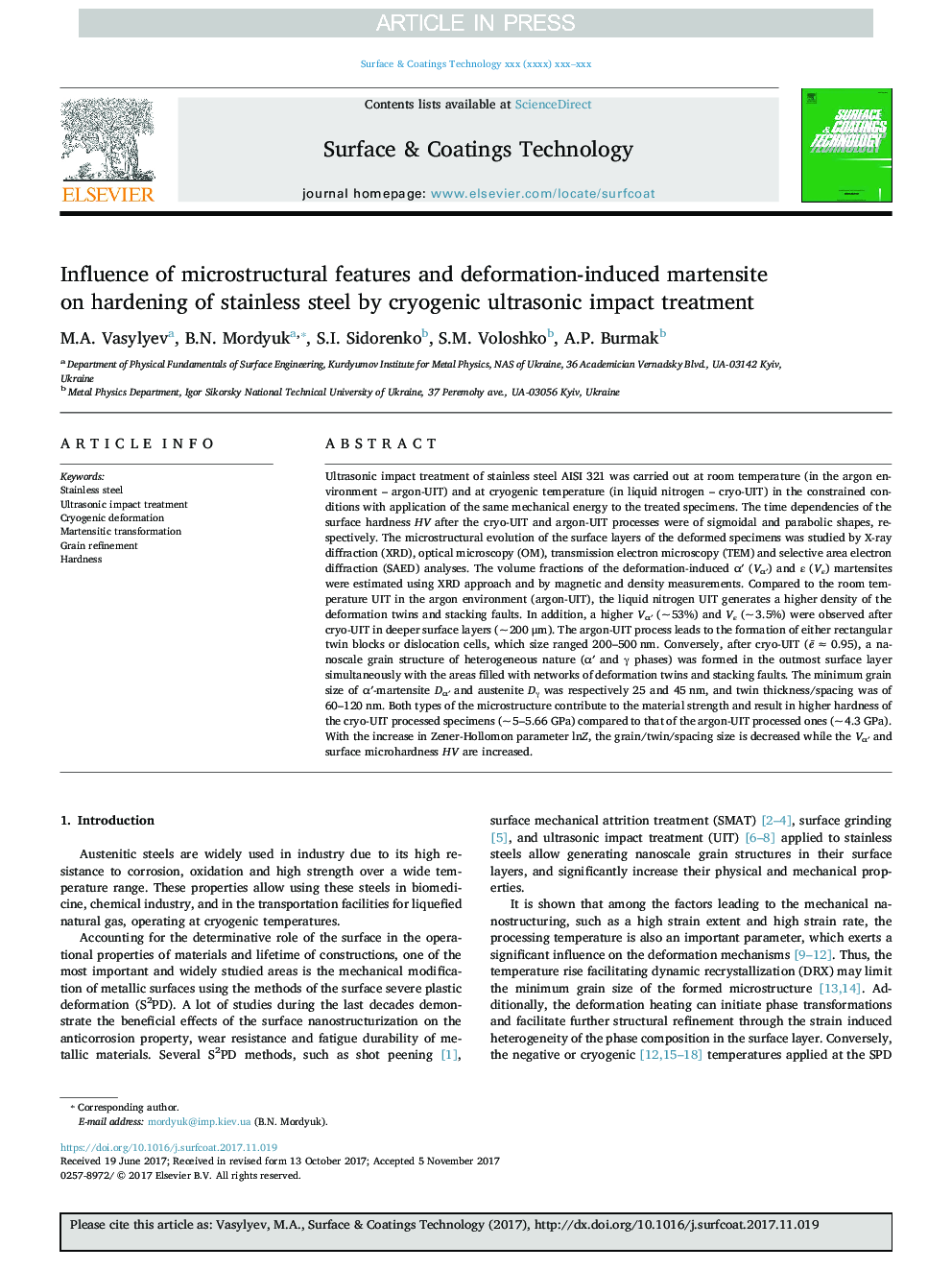| Article ID | Journal | Published Year | Pages | File Type |
|---|---|---|---|---|
| 8023871 | Surface and Coatings Technology | 2018 | 12 Pages |
Abstract
Ultrasonic impact treatment of stainless steel AISI 321 was carried out at room temperature (in the argon environment - argon-UIT) and at cryogenic temperature (in liquid nitrogen - cryo-UIT) in the constrained conditions with application of the same mechanical energy to the treated specimens. The time dependencies of the surface hardness HV after the cryo-UIT and argon-UIT processes were of sigmoidal and parabolic shapes, respectively. The microstructural evolution of the surface layers of the deformed specimens was studied by X-ray diffraction (XRD), optical microscopy (OM), transmission electron microscopy (TEM) and selective area electron diffraction (SAED) analyses. The volume fractions of the deformation-induced αⲠ(Vαâ²) and ε (Vε) martensites were estimated using XRD approach and by magnetic and density measurements. Compared to the room temperature UIT in the argon environment (argon-UIT), the liquid nitrogen UIT generates a higher density of the deformation twins and stacking faults. In addition, a higher VαⲠ(~ 53%) and Vε (~ 3.5%) were observed after cryo-UIT in deeper surface layers (~ 200 μm). The argon-UIT process leads to the formation of either rectangular twin blocks or dislocation cells, which size ranged 200-500 nm. Conversely, after cryo-UIT (Ä â 0.95), a nanoscale grain structure of heterogeneous nature (αⲠand γ phases) was formed in the outmost surface layer simultaneously with the areas filled with networks of deformation twins and stacking faults. The minimum grain size of αâ²-martensite DαⲠand austenite Dγ was respectively 25 and 45 nm, and twin thickness/spacing was of 60-120 nm. Both types of the microstructure contribute to the material strength and result in higher hardness of the cryo-UIT processed specimens (~ 5-5.66 GPa) compared to that of the argon-UIT processed ones (~ 4.3 GPa). With the increase in Zener-Hollomon parameter lnZ, the grain/twin/spacing size is decreased while the VαⲠand surface microhardness HV are increased.
Keywords
Related Topics
Physical Sciences and Engineering
Materials Science
Nanotechnology
Authors
M.A. Vasylyev, B.N. Mordyuk, S.I. Sidorenko, S.M. Voloshko, A.P. Burmak,
